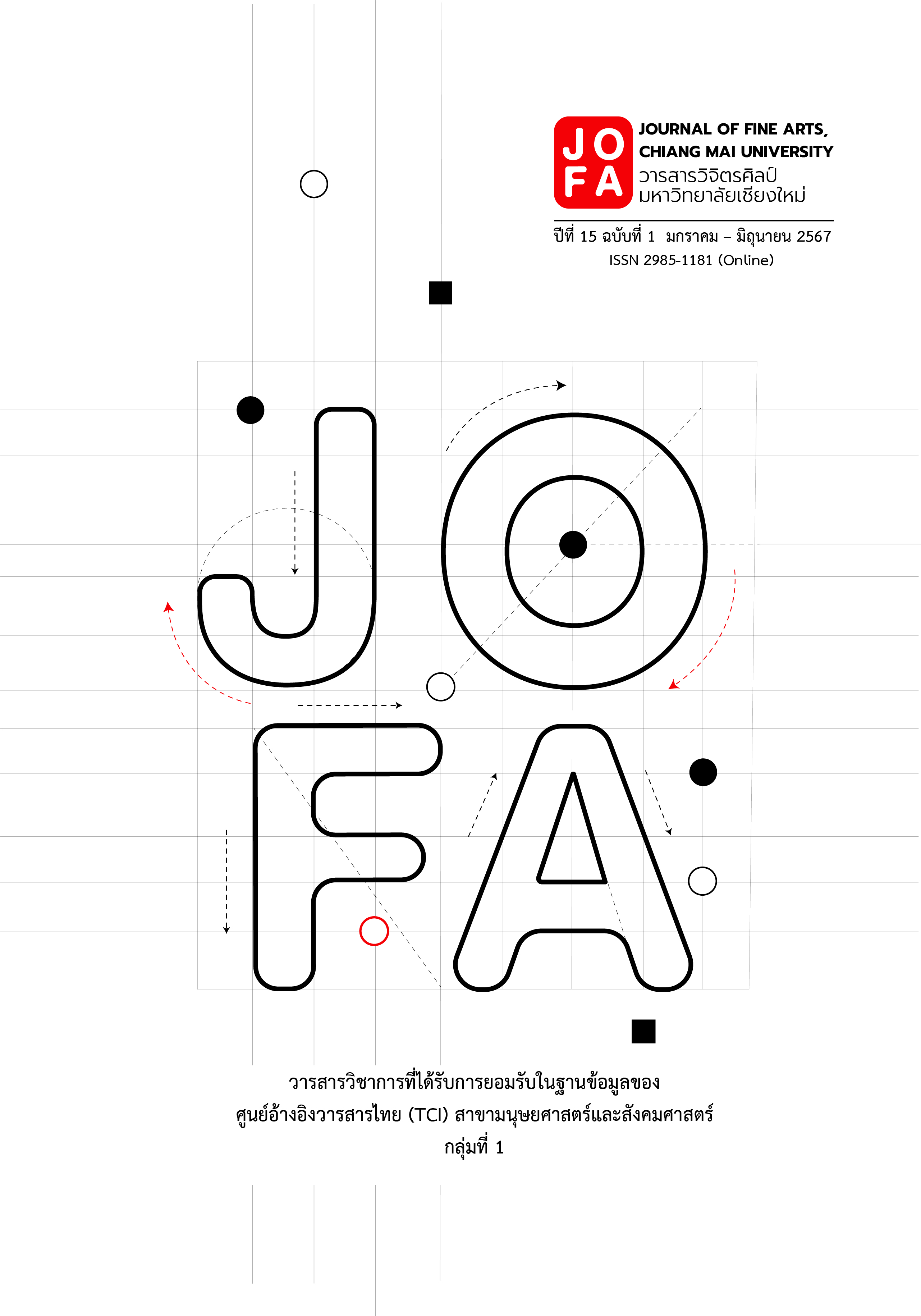Likay in the Digital Age
Main Article Content
Abstract
The objectives of this research were to study Likay performance style in the digital age and to analyze the factors that originate Likay in the digital age. The research was conducted based on research textbooks, field data collection, interviews with professional Likay academics, professional Likay artists and contemporary Likay artists, and participant and non-participatory observations. The researcher had the opportunities to do participant observation by performing Likay online with the Likay troupe. Additionally, the non-participatory observation was arranged by viewing Likay performances online through social media applications.
The major findings revealed that the digital age is an era where people pay attention to and rely on technology to facilitate their daily lives, both operational and entertained by social media. This allows us to see the performing arts widely appear in the present era, one of which is the Likay performance. In the digital age, Likay is popular for both artists and audiences to appear widely during 2017-2021. In the digital age, there are three types of Likay: 1) Nightly Likay performance in an open-air place 2) Occasionally Likay performance 3) Comtemporary Likay performance. In the digital age, there were two Likay performance forms: 1) Likay On-site with the audiences and 2) Likay Online presenting via social media platforms. The emerging of Likay performance in the digital age was based on three factors: 1) social trends that people pay more attention to social media, 2) situation in the country — Thailand faces problems of Covid 19, and 3) the changing of Likay audience’s core value. All aforementioned factors cause Likay performers to adapt themselves and the shows for surviving and earning the living in the digital era. The findings of this research could reflect the issue of performing arts and its continuous development in a changing world, which is the foundation of artistic stability that grows with the world in every era that will lead to sustainable growth of aesthetic work.
Article Details

This work is licensed under a Creative Commons Attribution-NonCommercial-NoDerivatives 4.0 International License.
References
Bunturng, A. (2021, November 9). Interview.
Bunturng, P. (2021, November 8). Interview.
Cohen, Elena P. (2016). Sāmphrǣng Wan Wān Sū Wan Nī : Kān Plīanplǣng Læ Kān Prap Tūa Thāmklāng Khwāmpen Mư̄ang [Sam Phraeng from Yesterday to Today: Change and Adaptation in the Middle of the City]. Research Report, Department of Anthropology, Faculty of Archeology, Silpakorn University.
Nattakarnjanadid, K. and Nuanyai, P. (2021). Likē Witthayu Sēnā Čhangwat Phra Nakhō̜n Sī ʻAyutthayā : Khwām Banthœ̄ng Thī Lư̄a Phīang Khwām Song Čham [Thai Traditional Radio Dramatic Performance, Sena District, Phranakhon Si AyutthayaProvince: The Entertainment Leaving Only a Memory]. Journal of Ayutthaya Studies Institute (JAS), 13(2), 7-26.
Praipiboonyakit, N. (1998). Likē [Likay]. Bangkok: S.T.P. World Media Company Limited.
Rojanasuksomboon, A. (2016). Likē: Kān Sadǣng Læ Kān Fưkhat [Likay: Acting and training]. Bangkok: Printing House of Chulalongkorn University.
Somphaiboon, S. (2000). Sanyaniyom Nai Sư̄sān Kān Sadǣng “Likē” Yuk Lōkāphiwat [Semiotics of Likay in globalized age] [Master’s thesis], Department of Speech Communication and Performing Art, Faculty of Communication Arts, Chulalongkorn University.
Sompiboon, S. (2021, August 28). Interview.
Thanomsriuthai, P. (2021). Kānchai Lak Pratyā Sētthakit Phō̜phīang Kap Sangkhom Yuk Dičhithan [Applying the sufficiency economy philosophy to the digital age society]. Journal of MCV Haripunchai Review, 5(1), 53 – 64.
Wirunrak, S. (2011). Nāttasin Ratchakān Thī Hā [Rama V’s Dramatic Arts]. Bangkok: Office for the Promotion of Welfare and Welfare for Teachers and Educational Personnel of Thailand Ladprao.


